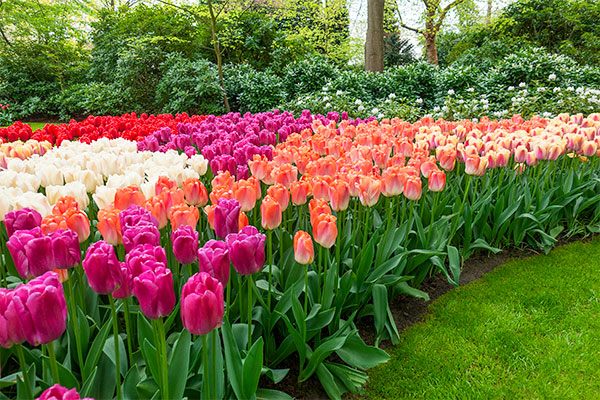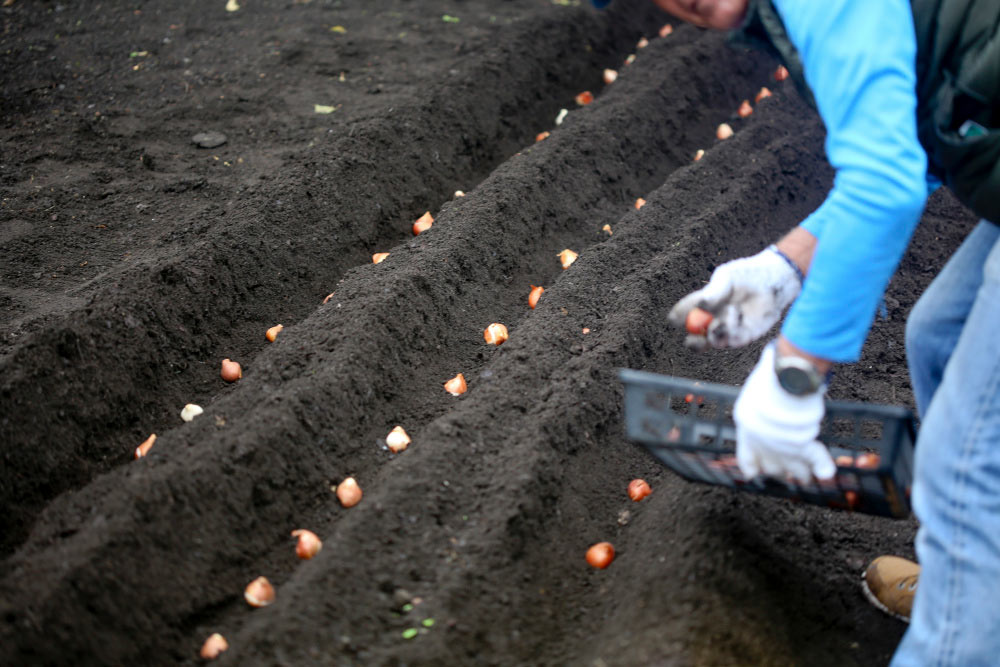How to Grow Tulips
Tulips are a vibrant, cheerful flower that brings a smile to anyone’s face and are a symbol of spring. They come in a variety of colors, with some varieties even being multi-colored. Tulips can make for a casual bouquet on your kitchen counter or an elegant, more formal arrangement for a special occasion. These flowers can range from 4 to 30 inches tall. Tulips grow upright with a single flower at the end of a hardy stem.

When to Plant Tulips
It’s important to plant tulips at the proper time to ensure healthy growth. For USDA hardiness zones seven and below, tulip bulbs should be planted in the fall before frost arrives. For zones eight and above, plant bulbs in late December or January to see spring blooms. Note that bulbs in this case should be chilled at 40 to 45 degrees Fahrenheit for 10 weeks prior to planting.
How to Plant Tulips in Your Garden
Tulips are typically planted about 6 inches deep and about 3 to 6 inches apart. In areas with severe frost, plant tulips 8 inches deep. This also helps them from being eaten by animals. Always water bulbs after planting, and continue to water in hot, dry climates. In climates that see rain, rainfall alone should be enough watering, as tulips don’t tolerate sitting in excess water well and may rot in these conditions. Plan to fertilize tulips bulbs with a 4-4-2 organic bulb fertilizer in the fall after planting and again in early spring when sprouts begin to emerge. To insulate and maintain balanced soil moisture, cover your bulb bed with a couple inches of mulch.
Allow stems and leaves to die naturally, turning to yellow or brown before you remove them. If you remove leaves while they’re still green, the bulb won’t retain enough nutrients to bloom the following year.
As for pests and disease, give tulips plenty of room for air circulation around the plants to reduce fungal growth. If your planting site has become contaminated, do not plant there for a minimum of three years. Inspect bulbs for signs of decay before purchasing, and remove infected plants immediately. Tulips are prone to aphids, bulb mites, thrips, rodents, and deer. Cover plants with chicken wire to avoid them being eaten, and keep an eye on pests, eliminating them quickly to recover remaining plants.
Where to Plant Tulips
For northern areas, tulips grow best in full sun. Plant in partial shade in southern areas, however, to avoid overheating. Plant tulip bulbs in an area with well-drained soil with a pH between six and seven ideally. If the soil in your area is mostly sand or clay, add compost. Ensure you have enough space to plant the bulbs about 3 to 6 inches apart.

